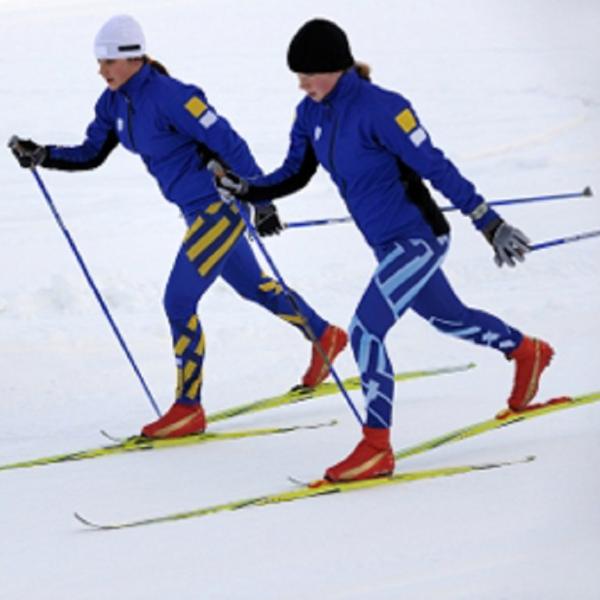Cross-Country Skiing – Crossing That Terrain Injury Free!

Did you know Cross-Country Skiing was introduced as one of the first sports in the inaugural winter games held in 1924 in Chamonix, France? With its roots in prehistoric times as a way to travel across snowy terrain and hunt for food, Cross-Country Skiing has certainly stood the test of the time! In Sochi, a total of twelve competitions will be held, and will feature men and women, teams and individuals.
Aside from its primal and competitive roots, this sport has evolved into a popular wintertime activity. Known as a more difficult sport, it takes great endurance and engages almost every major muscle group in the body. And, while this form of skiing has a low risk for injury, injuries can and do happen.
Let’s see what Kurt Gengenbacher – a residency-trained physical therapist with ATI who has completed three 55 kilometer ski races – has to say about this sport, common injuries and injury prevention tips.
“Cross country, or Nordic skiing, is one of the most demanding sports when performed at a high level,” says Kurt. “For a novice skier it can be a relaxing and enjoyable outdoor winter activity. However, it is recommended that you learn from an experienced skier at first to avoid common mistakes that can lead to injury.”
Common Cross-Country Injuries
Ankle Sprain: can occur due to a fall, or skiing on uneven terrain. The footwear used during skiing is not very supportive to the ankle and thus the athlete needs to utilize the muscles in the leg to stabilize the ankle.
Groin/Hip Strain: when skiing, it is not uncommon to have the snow move slightly from underneath the ski. This leads to a need for corrective stabilization within the core and hip so that the skier does not fall. If not ready for the change in footing, the athlete may pull a groin/hip muscle when trying to avoid a fall.
Upper Extremities: there are other traumatic injuries which can occur in the arms as a consequence of a fall. These include, but are not limited to, shoulder dislocations and avulsion fracture/sprain of the thumb. As with any fall, instinct tells us to reach forward for protection, and this is typically what leads to the shoulder and thumb injuries.
Overuse: as this is typically a long distance sport, there are also overuse injuries that can occur. Among these are shoulder impingement, anterior knee pain, and back/neck pain. These injuries happen as a result of poor form being used repeatedly throughout a prolonged participation in the activity.
Lastly, we cannot talk about injuries in a winter endurance sport without mentioning demands on systems other than musculoskeletal. Athletes also need to be aware of the risk of dehydration and frostbite, along with the high demands placed on the lungs and heart.
Injury Prevention Tips
Athletes should stretch well before participating, and may consider starting to work on balance for better stability while on the snow. Kurt also suggests starting with small manageable distances to avoid over exertion, as skiing when tired can decrease balance, leading to falls that usually result in injury.
Finally, make sure that equipment is functioning properly, and consult an expert if necessary. Participants should wear the appropriate clothing and dress in layers, while bringing enough water to stay hydrated.
If you’re experiencing pain, Complimentary Injury Screenings are available at an ATI Physical Therapy location near you. Call today to schedule yours!
